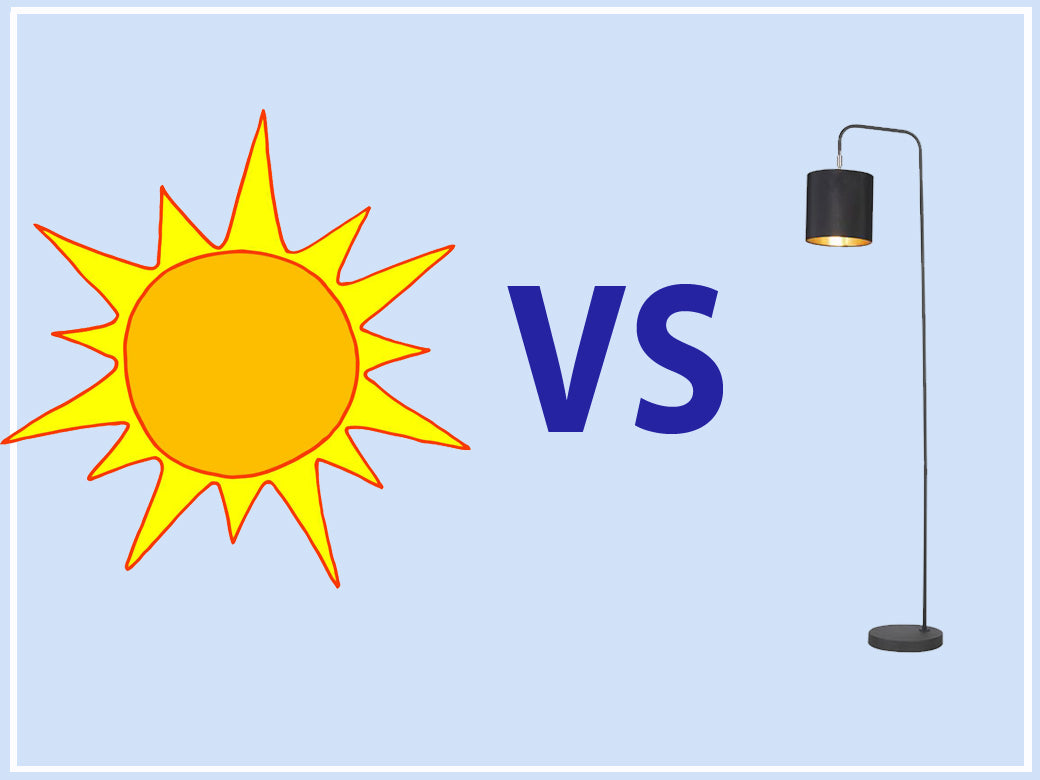
The truth about artificial light compared to natural light
In the vast abyss of information on bird lighting, the word “full spectrum” is constantly thrown around by light manufacturers trying to convince consumers to purchase their bulbs. It’s become etched into every bird lover’s brain that non-full spectrum lights are bad for a bird and that if you don’t purchase a full spectrum light bulb, you’re putting your bird’s health at risk.
The truth is that the phrase full spectrum means absolutely nothing. It’s a marketing term that has no scientific or official definition, can’t be measured, and, therefore, can be used to describe any light bulb.
How Full Spectrum Light Bulbs Compare to Natural Sunlight
In reality, there’s no such thing as a light bulb that can simulate natural sunlight; it’s simply beyond the laws of physics. The graph below is a spectrograph of the light produced by the sun at noon on a cloudless day. There’s an incredible amount of EM waves present in high intensities.

For decades, independent testing labs have measured so-called full spectrum bulbs and found little to no difference between their output and that of ordinary bulbs. Most bulbs marketed for birds that claim to be full spectrum with both UVA and UVB (and are generally two to three times more expensive) are actually selling the same bulb you can purchase at Walmart for $2. The graphs below are two samples that compare “full spectrum” light bulbs to sunlight.


As you can see, neither comes close to the brilliant spectrum produced by the sun. Yet, the myth of full spectrum lighting is still passed around as if it’s backed by science.
The 5600K claim
Many pseudo experts claim that birds need a light color of 5600K to be healthy. However, that color only represents the sun at noon on a sunny day. In actuality, the color of the sun and the amount of UV radiation fluctuates throughout the day, ranging from 1,000K to 30,000K. A light bulb, on the other hand, sits above your bird at a constant color for as long as it’s on. The notion that an artificial light can truly replicate the sun is unreasonable and unscientific.
The UV claim.
Light bulbs marketed as full spectrum that do contain UV are often repackaged reptile bulbs. Birds are not reptiles and don’t gain the same benefits from lighting of this design. Imagine if your bird sat on a flat rock in the middle of the desert all day long. It’s safe to say, it would most likely not fair too well. Never buy a bulb with UVB for your bird, as they can cause cataracts and blindness. Read more
Additionally, the amount of UV that actually reaches the Earth’s surface changes based on many factors, such as time of day, cloud cover, time of the year, and location (the closer you are to the equator, the more UV there is). Each bird species has a different natural environment and, therefore, diverse needs. For example, some of the smaller Amazon parrots that live under the canopy don’t receive any UVB at all while grassland finches are in the sun all day.
Facts About Full Spectrum Lighting
- Full spectrum is not a scientific name; rather it’s a clever marketing phrase that implies a lamp emits natural light.
- Because full spectrum is not a scientific term there is no measurement or definition for it.
- Lamps marketed as full spectrum are usually in the 5000K-6000K color range but in truth do not use the full visible spectrum.
- Sunlight is only 5500K at noon, its color temperature varies from 1700K-27000K during the course of a day. Now that is full spectrum.
- Very few Full Spectrum lamps include UV waves, and the ones that do are usually made for and marketed to reptile keepers because there is scientific evidence that reptiles benefit from UV lighting. Lights for birds that contain UV are usually repackaged reptile bulbs.
- If there are any health benefits caused by the color temperature of lighting in the bird room, they are immeasurable and have never been proven scientifically.
- A bird is not a plant and its feathers are not leaves; they will not respond to sunlight like a plant does. Yet, so-called experts constantly give the same advice to bird owners that one would give to plant owners.
- Last but not least, and maybe the most importantly, the goal of lamp manufacturers and sellers, including bird supply stores, is to extract your money with cleverly worded ads and outlandish claims.
About the Author
Mark Schack presents seminars on bird lighting at avian events around the country. Though without formal education in avian health, Mark is a mechanical engineer and lifetime hobbyist of breeding pet birds. Frustrated by the lack of availability of good lighting, he decided to build his own. The above information was gathered during Mark’s attempt to build “the perfect light” and through continued study of the subject.